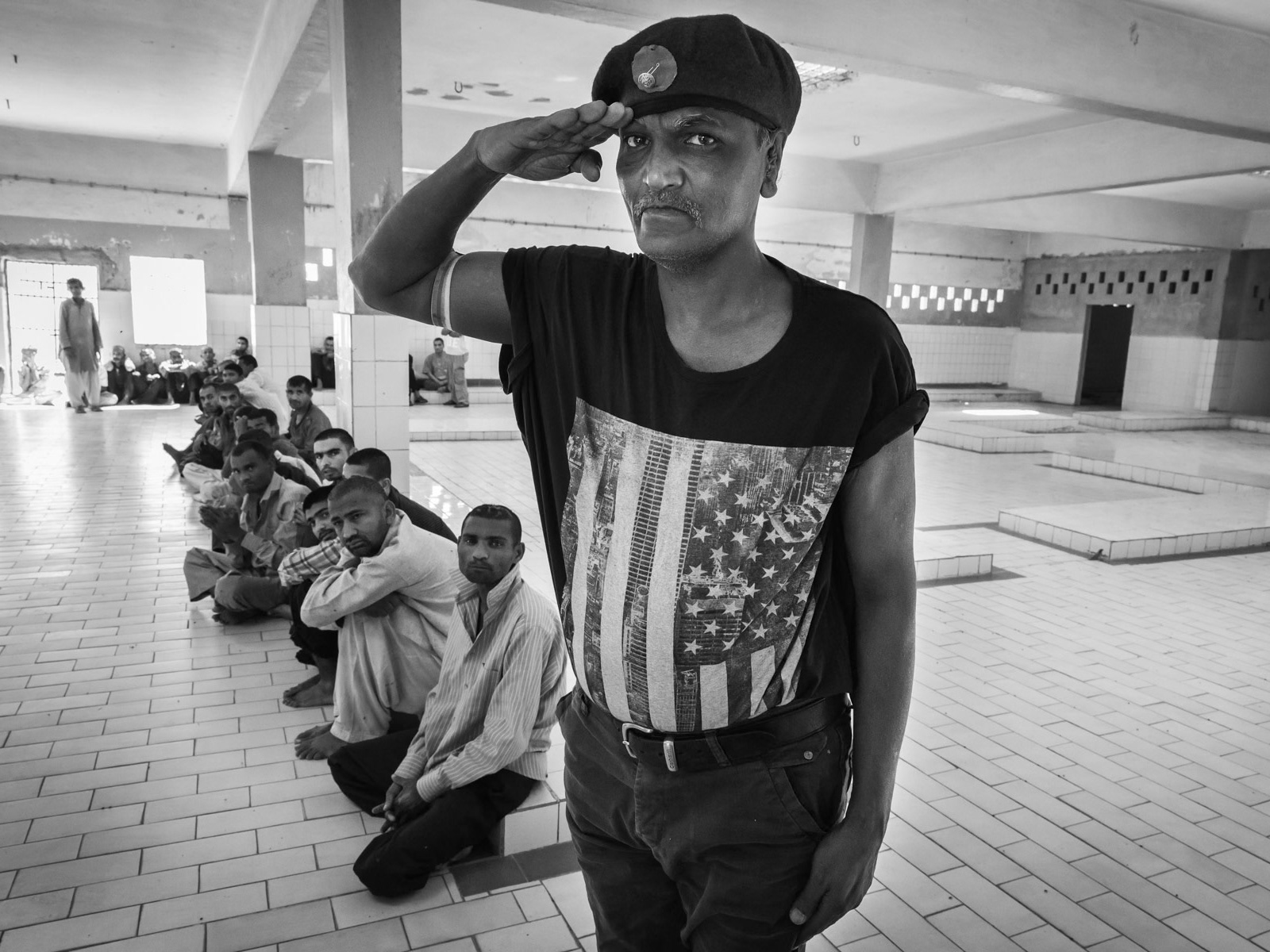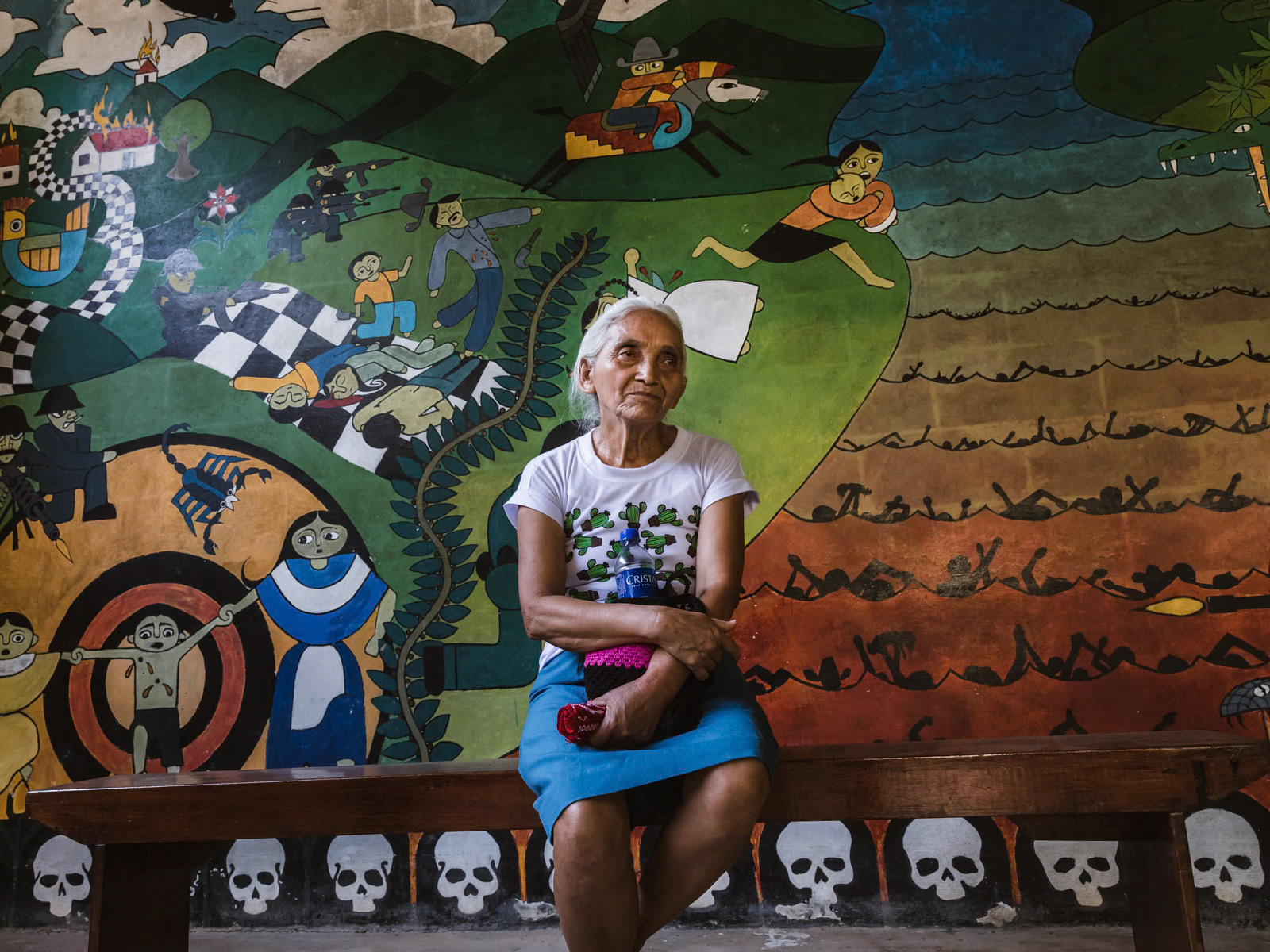Kashmir, a disputed region nestled between India, Pakistan, and China, has long been a flashpoint of tension in South Asia. Since the partition of British India in 1947, India and Pakistan, both nuclear-armed, have fought two wars and numerous skirmishes over the territory, which remains divided by a cease-fire line known as the Line of Control (LoC). Historically, the Indian-administered portion of Kashmir enjoyed a unique status under Article 370 of the Indian Constitution, which granted it significant autonomy, including its own constitution, a separate flag, and legislative powers over most matters except defense, foreign affairs, and communications.
Article 370 provided critical benefits to Kashmir's Muslim-majority population. It allowed the region to establish rules on permanent residency, property ownership, and fundamental rights, preventing outsiders from buying land or settling in the region. Despite sporadic violence and unrest, this framework ensured a degree of self-governance and cultural preservation for decades. However, in 2019, the Indian government, led by a nationalist administration, revoked Article 370, fundamentally altering Kashmir’s political and social landscape.
With the abrogation of Article 370, the local assembly was dissolved, and direct federal control was imposed. Many prominent Kashmiri leaders and activists were detained, and the Indian Constitution was amended to integrate Kashmir fully into the Indian Union. This decision, upheld recently by India’s Supreme Court, opens the door for significant demographic changes. Non-Kashmiris are now allowed to purchase land and invest in real estate, raising concerns about the erosion of the region's Muslim-majority character. Critics argue that this could lead to cultural displacement and exacerbate tensions in an already volatile region.
The region is now one of the most heavily militarized in the world, with over a million Indian military and police personnel deployed to maintain control. Villages and cities are under constant surveillance, with daily security sweeps to ensure the safety of the hundreds of thousands of Indian tourists who visit annually to admire Kashmir’s breathtaking landscapes. The pristine mountains, lush valleys, and serene lakes remain major attractions, but the palpable tension and heavy security presence evoke an atmosphere akin to military occupation.
While tourism has brought economic benefits to some, it has done little to alleviate the underlying grievances of the Kashmiri people. The revocation of Article 370 has heightened fears of marginalization and loss of identity, particularly among the Muslim population. Despite the region’s natural beauty and the famed hospitality of its people, the shadow of political unrest and the challenges of living under such intense militarization are inescapable. The move to revoke Kashmir’s autonomy has left its future uncertain, with many questioning the long-term implications for peace, stability, and cultural preservation in this historically contested region.

Kashmir is a disputed territory enclaved between India, China and Pakistan. Nuclear-armed neighbours Pakistan and India have fought 2 wars and numerous conflicts over Kashmir which is divided by a cease-fire line between the 2 countries. Since independance the Indian administrated part of Kashmir's status has been regulated by article 370 of the consitution which granted special privileges, a local constitution and assembly to the people of Kashmir. Even though the region has been frequently affected by violance between militants and the Indian Army, a certain degree of autonomy and self-governance was guaranteed through Article 370. The national(ist) government of India revoked Article 370 and amended the Indian constitution. The local assembly overseeing the Kashmir budget, education, and economic activity was dissolved, and many Kashmiri activists and senior local politicians were detained and transferred to India. Article 370 allowed Kashmir its own consitution, a separate flag and freedom to make laws. Security, defence and communications remained the preserve of the federal government. One of the main benefits of Article 370 for the Muslim-majority population of Kashmir was the ability to make its own rules and regulations related to permanent residence, ownership of property and fundamental rights. This greatly enabled a mechanism avoiding that foreigners or Indian from outside Kashmir could buy proprety or settle there. With Article 370 now revoked and recently confirmed by the Indian Supreme Court, it will be just a matter of time before the demographic character of the Muslim-majority region changes for good as non-Kashmiris will be allowed to buy land and develop real-estate projects. More than a million Indian military and police is present in Kashmir, which makes it one of the most dense security areas in the world where there is no direct conflict. All villages and cities are heavily guarded and sweeped on daily basis so that the hundred thousands of Indian tourists coming on mass tourism tours of a couple of days can feel safe and enjoy the extraordinary scenary. Despite the breathtaking landscapes and hospitability of Kashmiri, one can feel tangible tension and something similar to military occupation. Bach waters of Dal Lake in Indian administrated Kashmir, Srinagar, September 2023
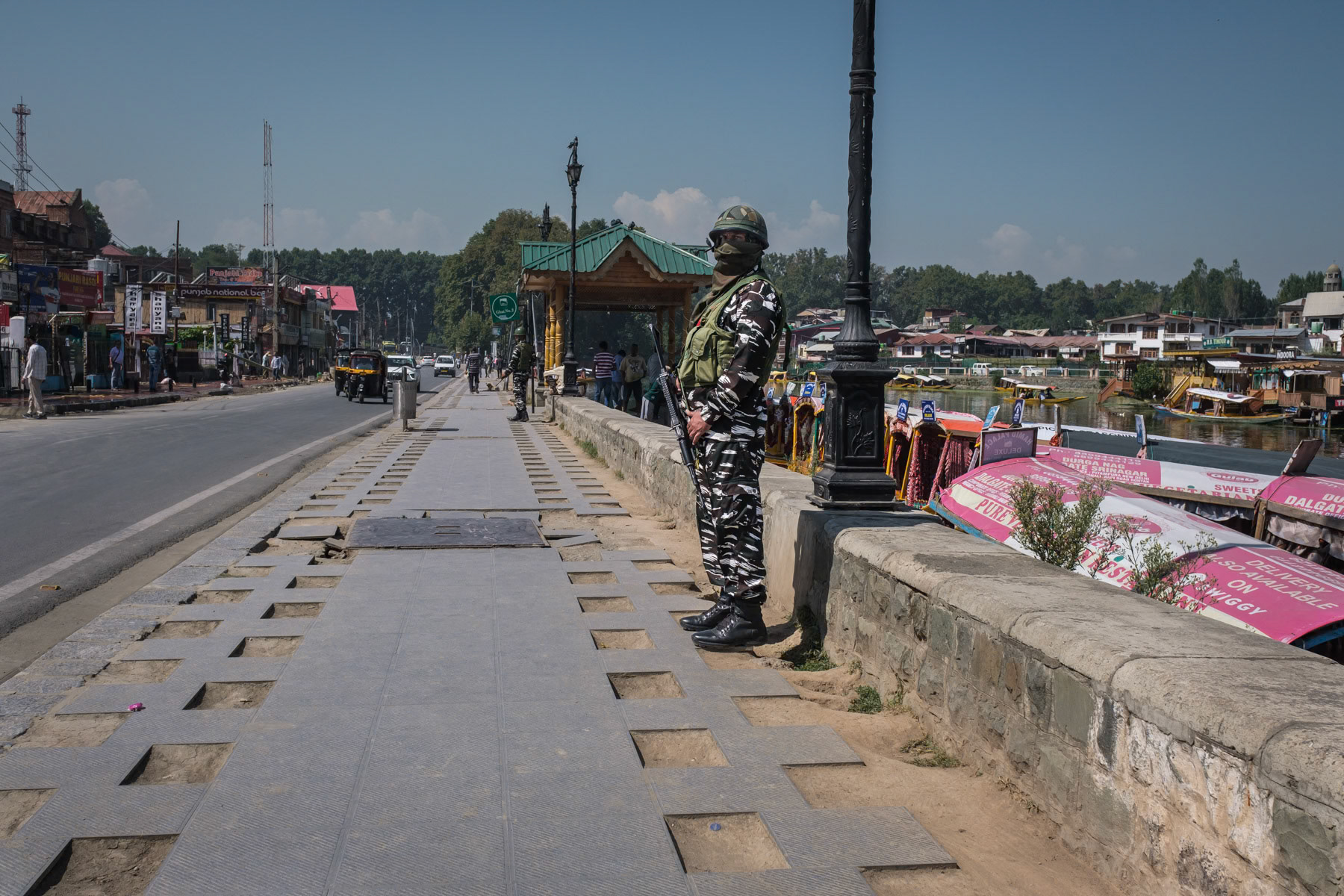
Indian military on duty on the streets of Srinagar. Kashmir with a predominately muslim population is divided between Pakistan and India in a status quo that has lasted since the end of the British Empire. The Kasmiri population in the part of Indian Administrated Kashmir lives in what they experience as occupation and being deprived from their basic human rights and self determination. India keeps the region in check at a cost of hundred thousands of troops patrolling the region and the border areas with Pakistan. Srinagar, India, September 2023

Srinagar, Indian Administrated Kashmir, September 2023

Dal Lake, Srinagar, Indian Administrated Kashmir, August 2023

Semi nomadic Gujjar minority with their livestock in the hights above Srinagar. Faqir Gujri village, Kashmir in Indian Administrated Kashmir, September 2023

Shepherd family in their summer shelter above 2000m in the Kashmiri mountains, Naranaag, Kashmir, September 2023
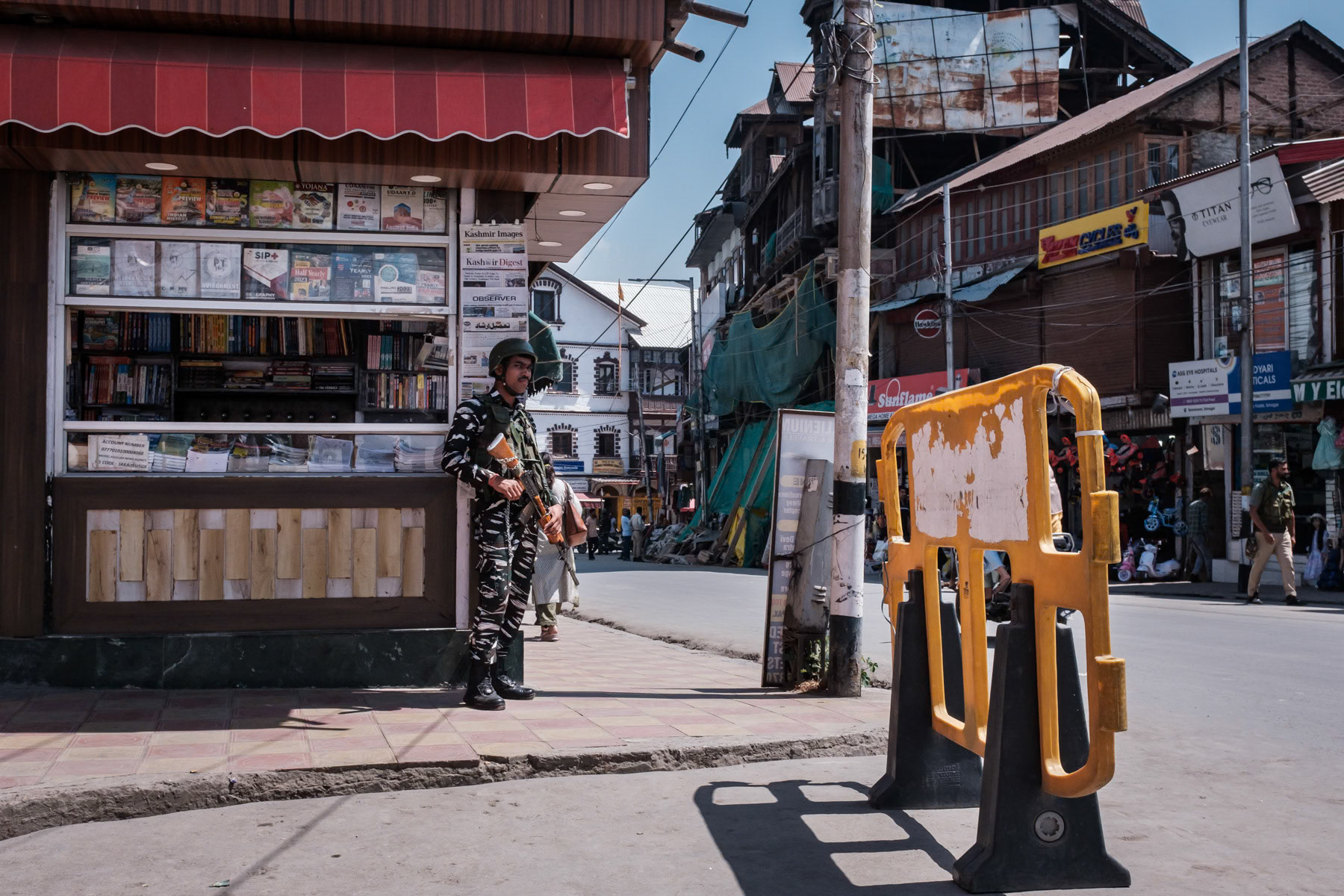
Indian military on duty on the streets of Srinagar. Kashmir with a predominately muslim population is divided between Pakistan and India in a status quo that has lasted since the end of the British Empire. The Kasmiri population in the part of Indian Administrated Kashmir lives in what they experience as occupation and being deprived from their basic human rights and self determination. India keeps the region in check at a cost of hundred thousands of troops patrolling the region and the border areas with Pakistan. Srinagar, India, September 2023

Kashmiri merchants on Lake Dal, Srinager, India, September 2023

Boat man, Lake Dal, Kashmir, India, September 2023

Back waters of Dal Lake in Indian administrated Kashmir, Srinagar, September 2023

Semi nomadic Gujjar minority with their livestock in the hights above Srinagar. Faqir Gujri village, Kashmir in Indian Administrated Kashmir, September 2023
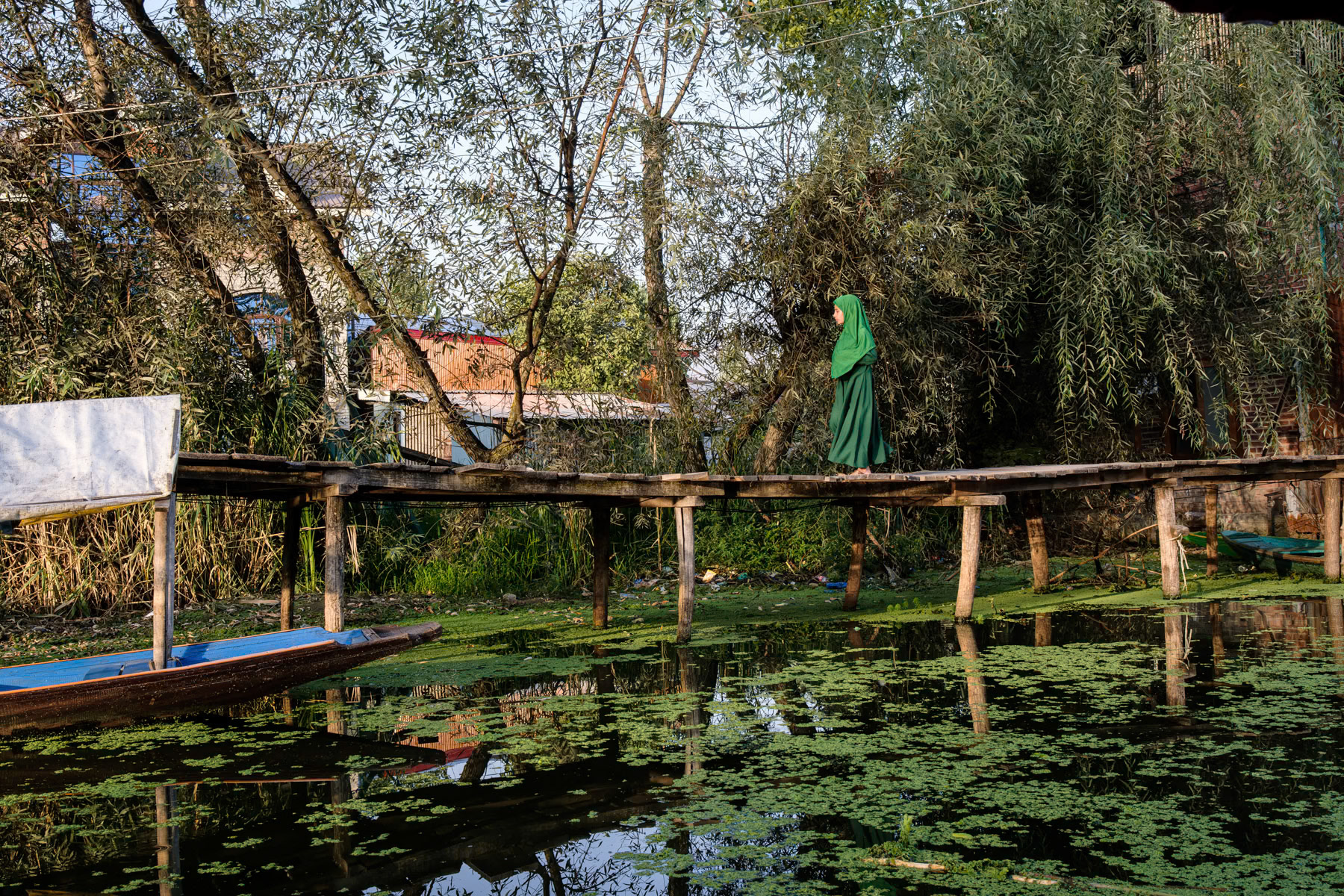
Back waters of Dal Lake in Indian administrated Kashmir, Srinagar, September 2023
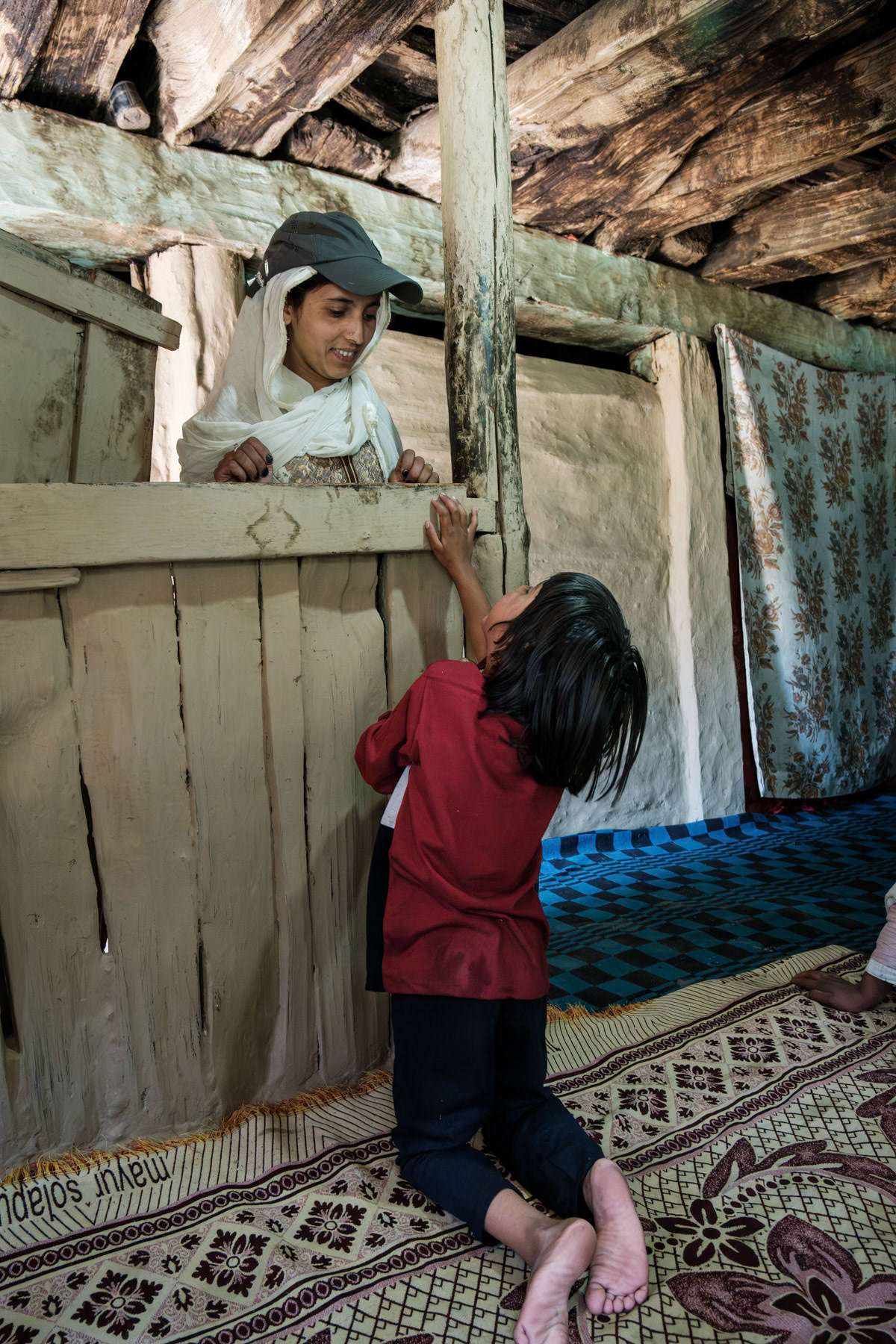
Mother and her daughter in a summer shelter used by shepherd families during the summer months. Naranaag mountains in Kashmir, India, September 2023

Traditional wooden boat house on Dal Lake, Srinager, Indian Administrated Kashmir, September 2023

Rural mosque in predominantly muslim Kashmir, Lake Dal, September 2023
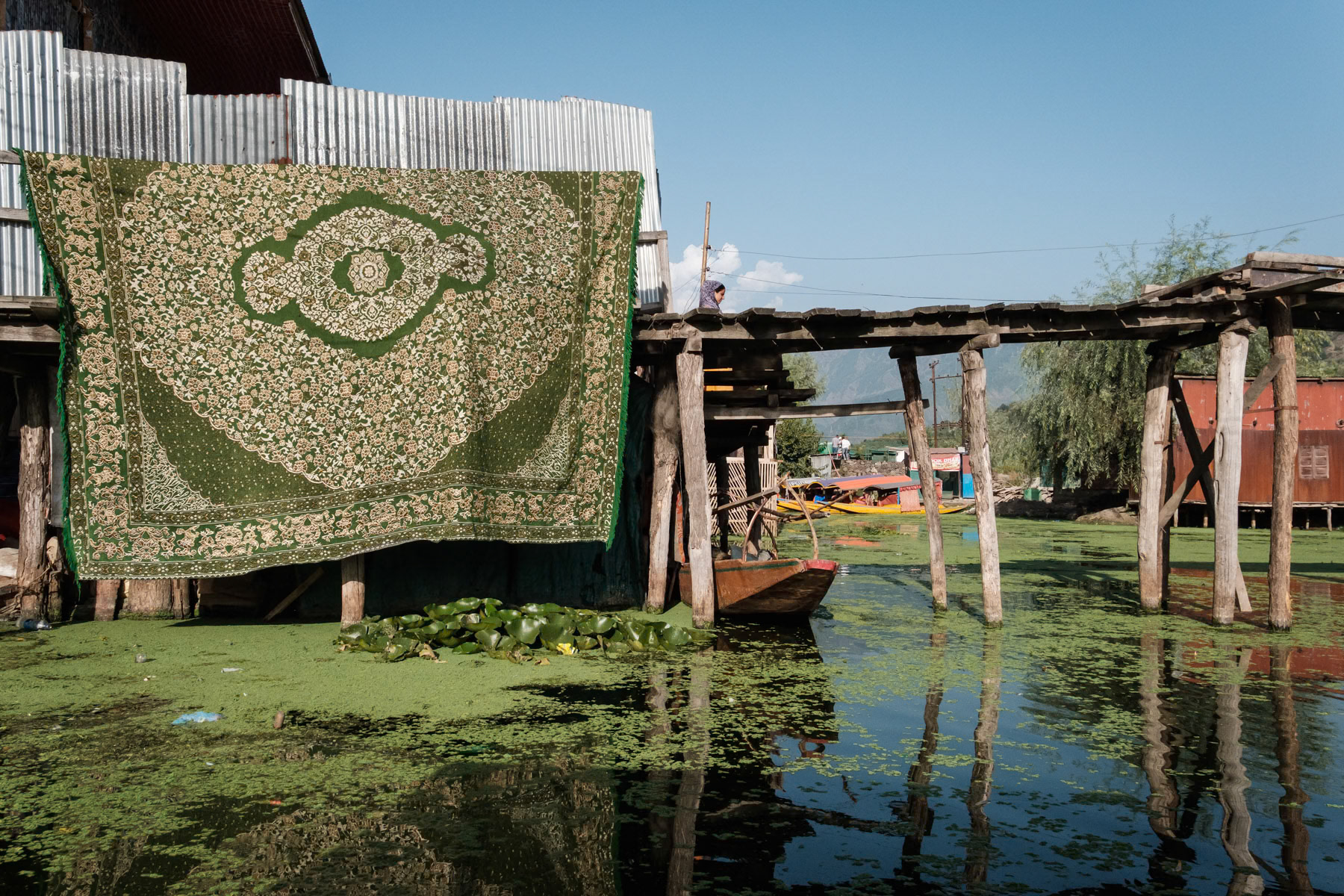
Water ways in the old town of Srinangar leading to Lake Dal, Indian Administrated Kashmir, September 2023

Semi nomadic Gujjar minority with their livestock in the hights above Srinagar. Faqir Gujri village, Kashmir in Indian Administrated Kashmir, September 2023

Back waters of Dal Lake in Indian administrated Kashmir, Srinagar, September 2023

Indian military on duty on the streets of Srinagar. Kashmir with a predominately muslim population is divided between Pakistan and India in a status quo that has lasted since the end of the British Empire. The Kasmiri population in the part of Indian Administrated Kashmir lives in what they experience as occupation and being deprived from their basic human rights and self determination. India keeps the region in check at a cost of hundred thousands of troops patrolling the region and the border areas with Pakistan. Srinagar, India, September 2023

Children of the Gujjar semi nomadic community in their high altitude summer village where they bring their live stock to graze. Faqir Gujri village in Indian Administrated Kashmir, September 2023
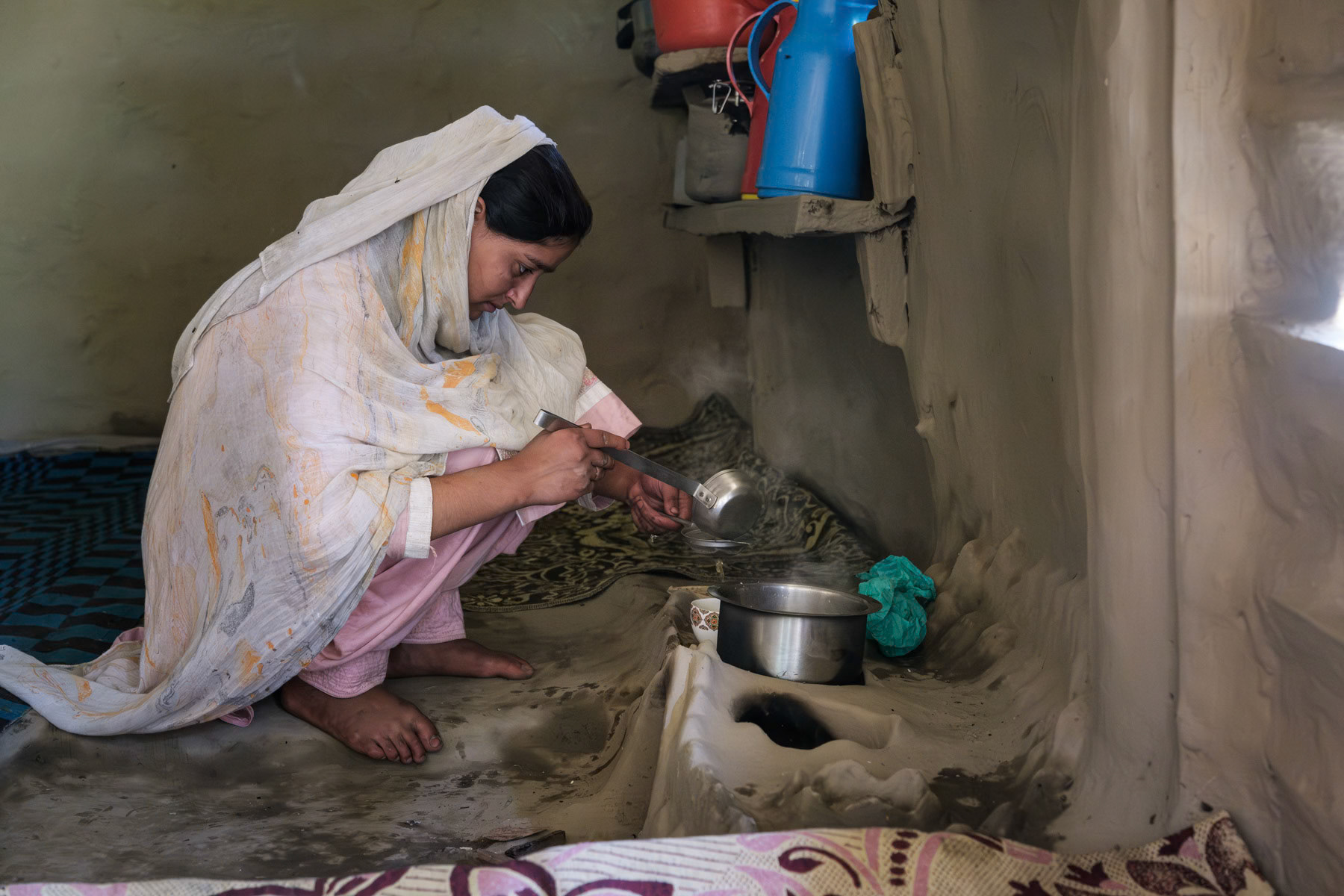
Kashmiri woman preparing coffee on a traditional mud stove. Naranaag mountains, in Indian Administrated Kashmir, September 2023

Indian military on duty on the streets of Srinagar. Kashmir with a predominately muslim population is divided between Pakistan and India in a status quo that has lasted since the end of the British Empire. The Kasmiri population in the part of Indian Administrated Kashmir lives in what they experience as occupation and being deprived from their basic human rights and self determination. India keeps the region in check at a cost of hundred thousands of troops patrolling the region and the border areas with Pakistan. Srinagar, India, September 2023

Neighbourhood of Srinagar tangled in the back waters of Lake Dal, Srinagar, Jammu and Kashmir, India, September 2023
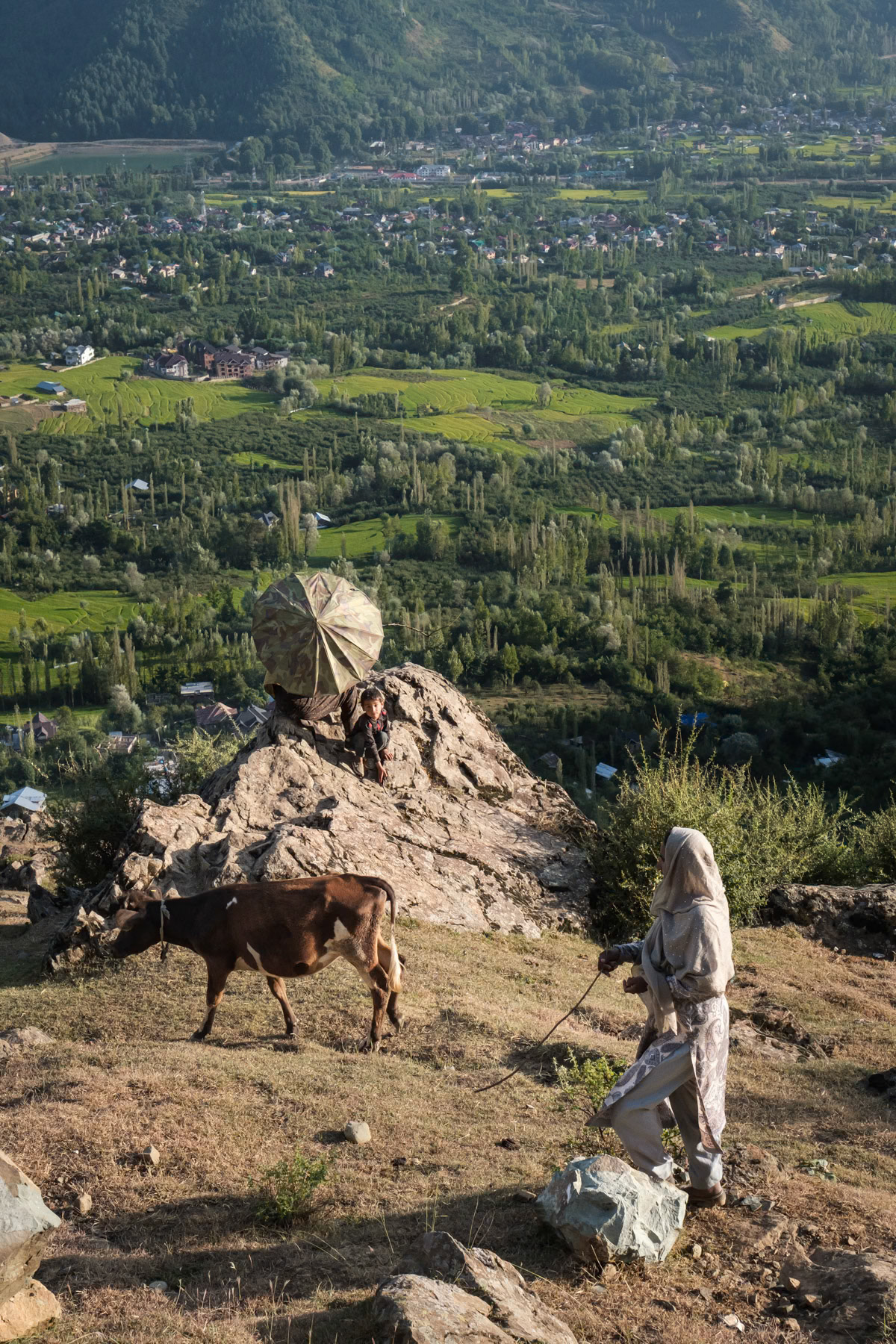
Semi nomadic Gujjar minority with their livestock in the hights above Srinagar. Faqir Gujri village, Kashmir in Indian Administrated Kashmir, September 2023

Back waters of Dal Lake in Indian administrated Kashmir, Srinagar, September 2023

A neighbourhood in Srinager built around the back waters of Lake Dal, Kashmir, India, September 2023

Semi nomadic Gujjar minority with their livestock in the hights above Srinagar. Faqir Gujri village, Kashmir in Indian Administrated Kashmir, September 2023




